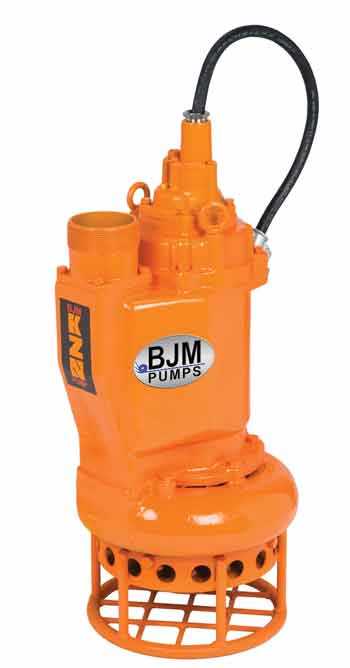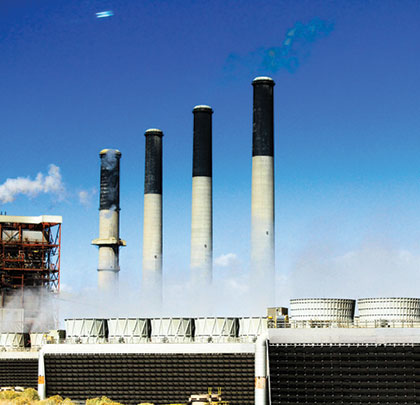The most challenging place for a pump at a coal-fired power plant is the hot fly-ash pit. Fly ash is a heavy and abrasive powder produced during the combustion of coal. Power plant operators recover fly ash from their combustion gas flues to remove particulate pollutants from air emissions, and they store fly ash in outdoor piles or pits.
A RIGOROUS CHALLENGE
Fly ash has a number of commercial uses, among them as a binder in concrete manufacturing and road construction. Comprised of small, glassy particles with sharp edges, fly ash is heavy and has a tendency to compact and harden, making it difficult to pump.
A power plant’s fly ash pits or piles are typically served by sumps that collect rainwater runoff. The sumps thus contain slurry that can exceed 30 percent by weight, some six times the amount that can be handled by the submersible sewage pumps that traditionally have been used by power plants in this application.
A DANGER TO PUMPS AND THE BOTTOM LINE
These misapplied pumps come with high maintenance costs and a high failure rate. The operators of a Colorado power station were told by one leading pump manufacturer that their pump needed to be shut down and pulled from the fly ash sump every three months to change the seal oil.
Such costly and labor-intensive shutdowns at the Colorado power plant turned out not to be necessary. Plant operators replaced their submersible sewage pump with a BJM KZN55, 7.5-horsepower heavy-duty slurry pump, turned it on and all but walked away.

DURABILITY MEETS PERFORMANCE
Constructed especially for the thick and abrasive slurries unique to the coal industry, the KZN is an extremely durable, top-discharge pump with a mechanical agitator and wide clearances. Because it has a straight path from intake to discharge, the KZN uses the pumped liquid to cool the motor, and because it does not have an elbow joint like a side-discharge pump, it has fewer surfaces that can wear and potentially fail. Because the pumping components of the KZN—the agitator, impeller and wear plate—are constructed with abrasive-resistant, high-chrome iron, the pump has been a workhorse at the Colorado plant.
MORE THAN SURVIVAL: SUCCESS
The KZN ran flawlessly—twenty-four hours a day, for two years—until a piece of rebar jammed in the impeller, causing a built-in overload protector to shut down the motor. The pump was pulled, the rebar was removed, and the agitator and impeller vanes were replaced because of minor wear. It has now back in service, well into its third year of pumping hot fly ash. The operators initially looked for a pump that could merely survive these harsh conditions, but are now extremely pleased to find a solution they can count on for some time to come. ◆
Suzette Gibson is the marketing coordinator for BJM Pumps, LLC. Headquartered in Old Saybrook, Connecticut, BJM Pumps has been serving the industry since 1983 by supplying quality pumps at a modest price. For more information, call 877.BJM.PUMP (877.256.7867) or visit www.bjmpumps.com.
____________________________________________
MODERN PUMPING TODAY, June 2015
Did you enjoy this article?
Subscribe to the FREE Digital Edition of Modern Pumping Today Magazine!
![]()


